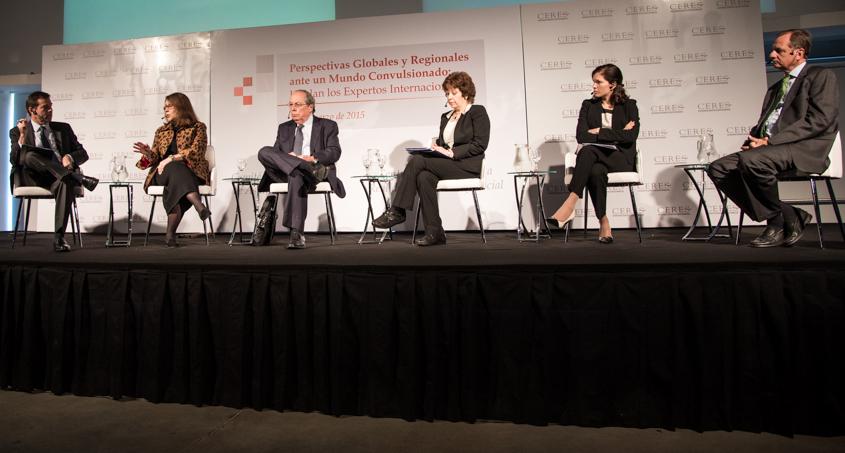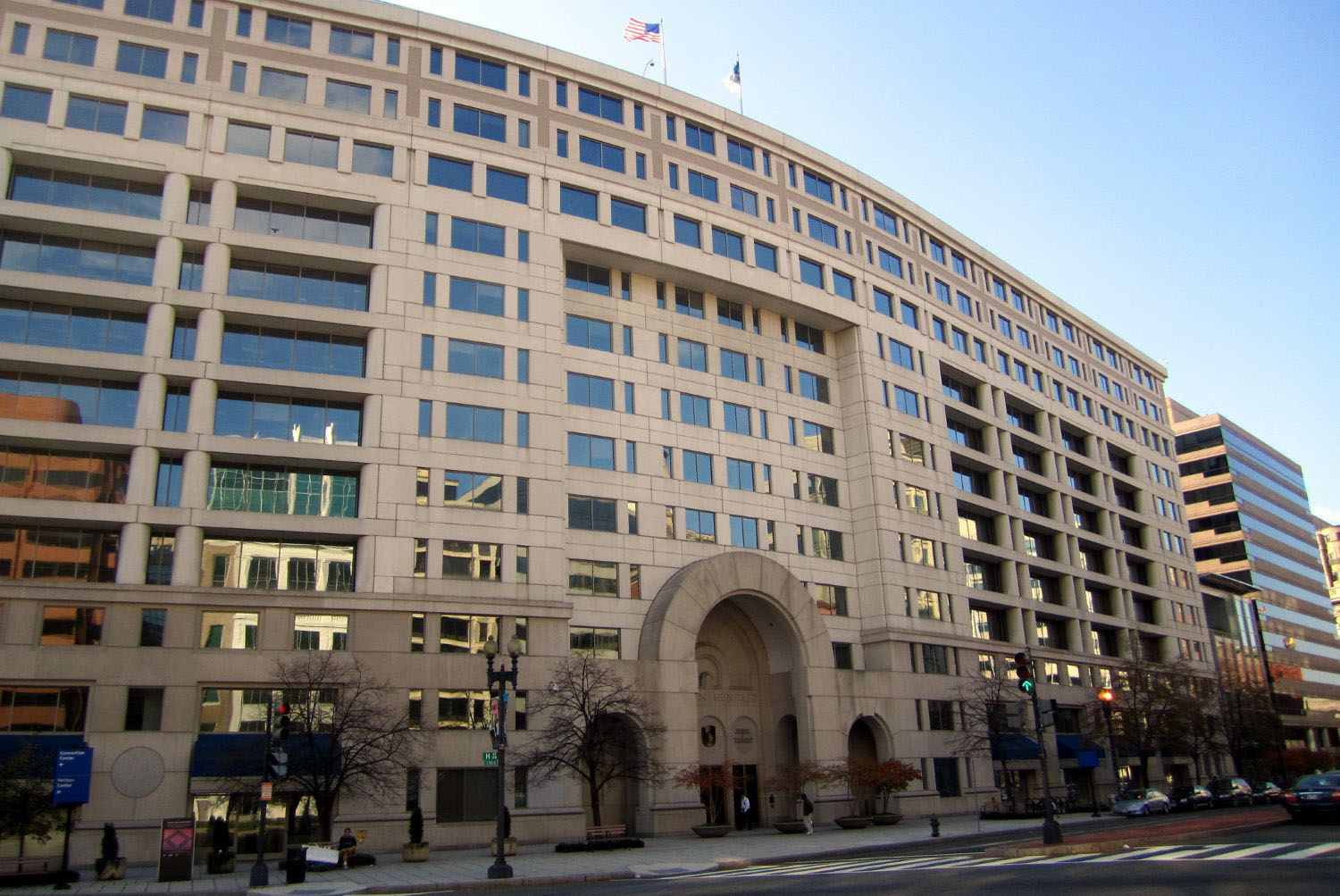
“Latin America is no exception regarding the adverse changes in emerging market conditions that have occurred since the US Fed began reducing Quantitative Easing (QE) in May 2013.” That’s the assessment of the Latin American Shadow Regulatory Committee (or CLAAF) in its latest statement. The Committee met in Uruguay last week and concluded that the likelihood of fresh trouble for the region in 2015 is high – with bad news arriving in waves.
In CLAAF’s view the first wave started with the Fed’s QE tapering and the Committee warned about the potential of a second wave of reduced international investors’ exposure and capital flows to emerging markets. Moreover, these waves seem to be associated with significant and persistent consequences that might complicate the effectiveness of monetary policy in the region.
The first wave of bad news was identified by the committee in its December 2013 statement. This wave put an end to the bonanza of 2004-2013 and was defined by the following external and domestic factors:
- Fed’s QE tapering in May 2013. Since then, the likelihood of a US interest rate hike has haunted international investors and created substantial though gradual reductions in capital inflows to emerging economies.
- The plunge in the prices of commodities exported by the region, which could be aggravated by China’s economic slowdown.
- Risks coming from China (resulting from an excessive credit expansion through institutions in the shadow banking sector) may exceed those associated with an economic slowdown, to the extent that such development coincides with a financial crisis.
- Based on the committee’s prior statement, the lack of clarity about the future evolution of US monetary policy and the revaluation of risks associated with investments in emerging economies increased the likelihood of a sudden slowdown in capital flows to the region.
- Domestic policies at the regional level (weaker fiscal positions, higher current account deficits, hidden risks associated with high foreign currency indebtedness, and lack of policies to boost productivity) have exacerbated the risks derived from the external environment.
All of these factors have already had an impact on the region’s economies. Latin America and the Caribbean have suffered a sharp slowdown. Estimated growth dropped from a regional average of 4.5 percent in 2011 to a mere 1.2 percent in 2014. Since commodity prices are not expected to recover any time soon, there is a persistent component in the deceleration of economic growth that, in turn, reinforces lower capital inflows and currency depreciations.
Now the committee has identified new risks that may generate a second wave of adverse effects for the region and for emerging markets in general. Specifically, this second wave would further decrease international investors’ exposure and capital flows to emerging markets. These risks might raise volatility and uncertainty even further. The most relevant risk factors are:
- Tighter US monetary policy. As the Fed’s monetary policy framework is moving towards the abandonment of its hyper-expansionary monetary policy, investors might change their expectations on the speed and magnitude of US hikes in interest rates, increasing volatility and uncertainty in international financial markets.
- Abrupt appreciation of the US Dollar. Asymmetric QE policies by main central banks like the Fed, the European Central Bank (ECB), and the Bank of Japan (BOJ), have ushered in a significant appreciation of the US Dollar against almost all currencies. The quick strengthening of the dollar has highlighted once again the risks associated with accumulating dollar-denominated public and private debt during the years of the bonanza.
- Financial Contagion in Emerging Markets. New sources of emerging market contagion risks have appeared: Russia’s potential default, a possible Greek exit from the Eurozone, Brazil’s likely credit rating downgrade, and Venezuelan instability (although the latter is not of systemic importance).
As with the first wave, the adverse shocks associated with this second wave would also be persistent, possibly compromising the effectiveness of monetary policies in the region. Specifically, a monetary policy based on short-term interest rate movements to temper the initial effects of a financial shock may lose effectiveness rapidly. In this sense, fiscal policies and measures to mitigate the effects of illiquidity and loss of access to international capital markets are needed. While gradual and credible fiscal adjustment would be appropriate for permanent negative shocks, international reserves could play a significant role– especially in economies with a high proportion of foreign-denominated debt–in addressing currency or maturity mismatches. Specifically, the committee recommends that reserves should be used mainly to facilitate foreign currency funding in critical sectors.
Finally, the committee cautions that the traditional International Monetary Fund (IMF) model of financial assistance combined with restructuring, whose contagion effects have been relatively contained in Europe, could have much more unpredictable results in emerging markets. In one scenario, risks of financial contagion might increase if new crises were to occur in emerging economies. This contrasts with Europe’s recent case of contained contagion effects, which can be traced to the ECB’s timely intervention and the Eurozone’s institutional strength.
The Committee is grateful to CERES, Uruguay’s most prestigious think tank for hosting the three-day deliberation. This and previous CLAAF statements are available in English, Spanish and Portuguese. You can also subscribe to the Latin American Initiative in order to receive more timely and path-breaking research on the region!

“América Latina no está exenta al cambio que se ha producido en las condiciones de las economías emergentes desde el comienzo del fin de la política de expansión monetaria cuantitativa (QE por sus siglas en inglés) en Mayo de 2013 y la probabilidad de una nueva ola de malas noticias para la región durante el 2015 es alta.” Esta evaluación del Comité Latinoamericano de Asuntos Financieros (CLAAF) motivó la elaboración de su última declaración. El Comité se reunió la semana pasada en Uruguay, auspiciado por CERES, el centro de estudios más prestigioso del país, para una discusión 3 días sobre el tema.
El Comité considera que las malas noticias para la región se están generando en olas. La primera ola comenzó con el anuncio de la reducción de su programa de compra de activos por parte del FED en el 2013 y el comité advirtió sobre la posibilidad de una nueva ola que reduciría la exposición de inversionistas internacionales y flujos de capitales a mercados emergentes. Más aún, estas olas parecen estar asociadas con consecuencias significativas y persistentes que podrían complicar la efectividad de políticas monetarias en la región.
La primera ola fue identificada por el comité en su declaración de Diciembre 2013. Esta ola marcó el fin de la bonanza que caracterizó el período 2004-2013 y se definió por los siguientes factores externos y domésticos:
- El anuncio por parte de la FED en mayo 2013 sobre la reducción de su programa de compra de activos. A partir de allí, el potencial de que ocurra un aumento en las tasas de interés de EEUU ha estado en la mente de los inversores internacionales y ha generado una disminución marcada, aunque gradual, en los flujos de capitales hacia las economías emergentes.
- El proceso de disminución en los precios de las materias primas que inició en 2011 podría exacerbarse a raíz de la desaceleración económica de China.
- Los riesgos provenientes de China (provenientes de una fuerte expansión del crédito, canalizado en gran medida a través de instituciones que se desempeñan al margen del sistema financiero tradicional) puedan exceder simplemente a los derivados de una desaceleración económica, en la medida en que dicho fenómeno se combine con una crisis financiera.
- Basada en la declaración anterior del comité, la falta de claridad acerca de la evolución futura de la política monetaria en los EEUU, y la revaluación del riesgo de las economías emergentes en general, han aumentado la probabilidad de que ocurra un frenazo en los flujos de capitales a la región.
- Las políticas domésticas a nivel regional (deterioro de balances fiscales, altos niveles de déficit de cuenta corriente, riesgos ocultos asociados con altos niveles de endeudamiento en moneda extranjera y la falta de políticas tendientes a aumentar la productividad) han exacerbado los riesgos derivados del entorno externo.
Todo este conjunto de factores ya han estado impactando la economía de la región. América Latina y el Caribe han sufrido una fuerte desaceleración. El crecimiento estimado cayó de un promedio regional de 4.5% en el 2011 a apenas 1.2% en el 2014. No se espera que los precios de las materias primas se recuperen en el corto plazo, de manera que existe un componente persistente en la desaceleración del crecimiento económico que, a su vez, reduce aún más la entrada de flujos capitales y devalúa aún más sus monedas.
Ahora, el comité ha identificado nuevos riesgos que pueden generar Todo este conjunto de factores ya han estado impactando la economía de la región. Específicamente, esta segunda ola reduciría la exposición de inversionistas internacionales y flujos de capitales a mercados emergentes. Estos riesgos se pueden elevar a otro plano la volatilidad y la incertidumbre. Los factores de riesgo más relevantes son:
- Apretón monetario en los EEUU. El marco de política monetaria de la FED está cambiando en la dirección de abandonar las políticas monetarias expansivas no convencionales (QE). Como resultado existe la posibilidad de que el mercado cambie sus expectativas sobre la rapidez y la magnitud de la normalización de la política monetaria en los EEUU, aumentando la volatilidad y la incertidumbre en los mercados financieros internacionales.
- Apreciación abrupta del dólar. La adopción de políticas de QE asimétricas por parte de los principales bancos centrales a nivel global (en particular, la FED, el Banco Central Europeo, y Banco de Japón) ha resultado en una apreciación significativa del dólar frente a prácticamente todas las monedas. El rápido fortalecimiento del dólar ha vuelto a poner en el centro de la escena los riesgos asociados el endeudamiento en dólares en los sectores público y privado que se acumuló durante la gran bonanza.
- Contagio financiero en los mercados emergentes. Han aparecido nuevas fuentes de potencial riesgo de contagio en los mercados emergentes: un potencial default de Rusia, una posible salida de Grecia de la zona Euro, una probable rebaja en la calificación de riesgo de Brasil y Venezuela como otra fuente potencial de inestabilidad (aunque sin una dimensión sistémica importante).
Como en la primera ola, los shocks adversos asociados a esta segunda ola también serían persistentes, comprometiendo la efectividad de políticas monetarias en la región. Específicamente, una política monetaria basada en ajustar una tasa de interés de corto plazo para suavizar los efectos iniciales de un shock financiero, puede perder su efectividad rápidamente. En este sentido, políticas fiscales y medidas para mitigar los efectos de situaciones de fuerte iliquidez y de pérdida de acceso a los mercados internacionales de capital son necesarias. Mientras que ajustes fiscales graduales y creíbles serían apropiados frente a shocks negativos permanentes, las reservas internacionales podrían tener un rol importante--particularmente para las economías con una alta proporción de deuda denominada en moneda extranjera—frente a descalces de moneda y de plazos. Específicamente, el comité recomienda que las reservas deben utilizarse mayormente para facilitar el financiamiento en moneda extranjera en sectores críticos.
Finalmente, el comité advierte que el modelo tradicional de asistencia con restructuración del Fondo Monetario Internacional (IMF, por sus siglas en inglés), cuyos efectos de contagio han sido relativamente contenidos en el caso de Europa, podría tener resultados mucho más inciertos en el contexto de los mercados emergentes. En un escenario, los riesgos de contagio financiero posiblemente aumenten de surgir nuevas crisis en economías emergentes. Esto contrasta con el reciente caso de Europa, donde los efectos de contagio han sido relativamente contenidos gracias a la acción del Banco Central Europeo y a la fortaleza institucional de dicho grupo de economías.
Ésta y todas las declaraciones anteriores del CLAAF están disponibles en español, inglés y portugués. ¡También se puede suscribir a la Iniciativa para América Latina para recibir nuestras innovadoras investigaciones sobre la región!
Disclaimer
CGD blog posts reflect the views of the authors, drawing on prior research and experience in their areas of expertise. CGD is a nonpartisan, independent organization and does not take institutional positions.





